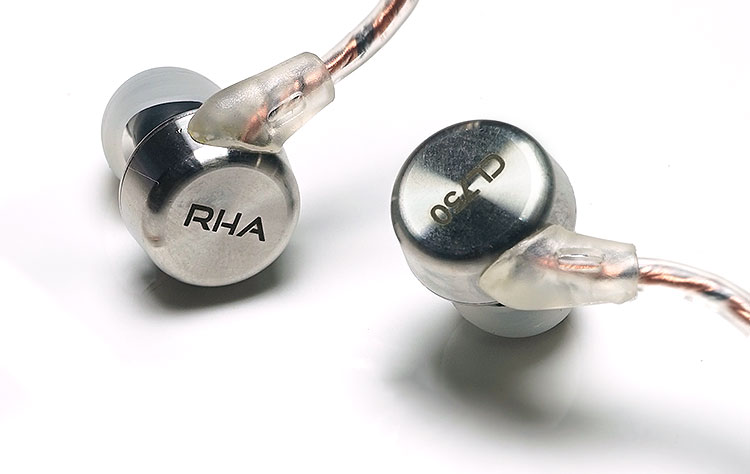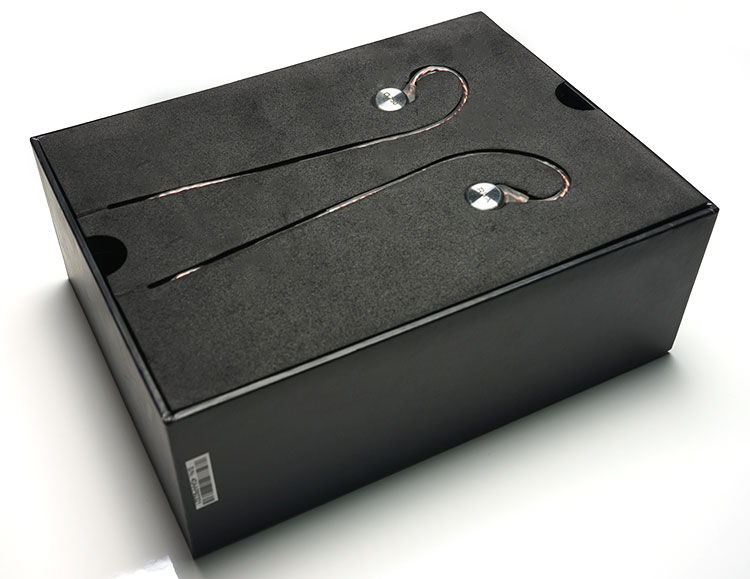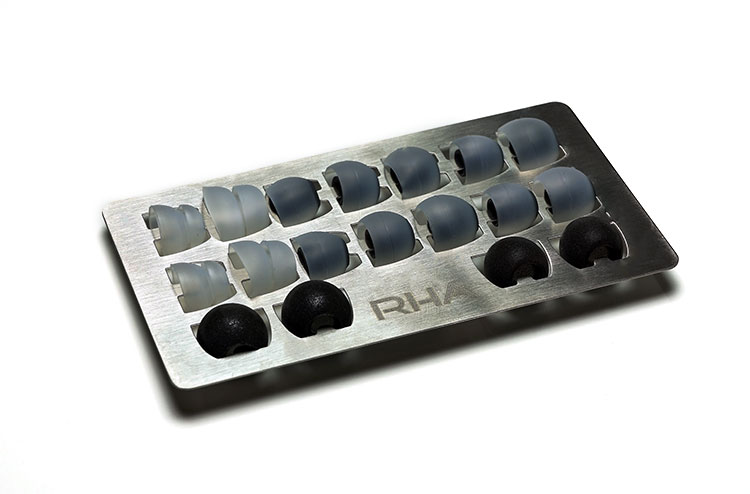If the CL1 we reviewed a few weeks ago could be considered a foray into the unknown, the new $140 CL750 could also be classified as a return to what RHA do best; quality sound at a very competitive price. If the numbering sequence is a hint then yes, you are right, the 750 is the successor in some ways to the original and very respected MA750.
The difference this time is in the initial two letterings, or CL, which denotes a brand new driver at the heart of this particular 750 variant and it is not too far off how the flagship CL1 operates and sounds.
What Is The Pitch?
Targeted Performance
Once again, the CL750, likes its bigger sibling the CL1, does not curry favor with the general consumer crowd. This is an IEM built for use with amps and the specs confirm as much with a very low 89dB efficiency rating and a very high 150-ohm impedance value.
To get the most out of the CL750 you have to be the type who has either a very good DAP or a more than decent portable amp. Audiophiles are the clear target for the CL750 but this time RHA have covered their core base, those hard won and loyal fans on tighter budgets but no less in impeccable taste for quality audio.
Trickle Down Benefits
In addition, there is a lot of ‘trickle down’ technology and features from the flagship CL1 that the CL750 customers will benefit from. This includes selling points such as the quality braided, high conductivity oxygen-free copper cable, the new stitched carry case, the familiar and handsome tip tray and the wide selection of tips. Even the retail packing has the class of the CL1.
Technology such as the CL dynamic driver is also being pushed as having the same purposed tonal objective (albeit on a lower level) as the exquisite ceramic driver of the CL1; an emphasis on control, accuracy, and clarity right across the full frequency range. These are action words a lot of audiophiles will jump on.
Build
303F Stainless Steel
The CL750 follows similar design lines to the original MA750 so it has a more traditional circular look to it than the recent molded designs of the T-series and the new CL1. The driver housing is made of the same reliable robust 303F stainless steel composite of the MA750 that feels rock hard and very durable. RHA have named this particularly 303F alloy composite as an Aerophonic™ design with a claimed 8 times increased density over common thermoplastics as well as a better chamber for delivering low distortion sound and reducing internal resonance.
Finish
This is a two-piece shell with a single clean seam line and terminating in a non-detachable cable silicone rubber exit at the top of the cylindrical SS shell and a single tiny bass port for the driver to breathe at the base of the housing. The housings are finished in the traditional RHA manner with the brand name etched on the top plate of one driver and the product name on the other.
Driver
Inside RHA have changed up the driver from the MA750 which is now defined as an ultra-wideband CL dynamic driver and more in line with the CL house sound which had a very heavy emphasis on good extension and treble performance. It is, after all, the same DD driver used by the CL1 though without the ceramic plate.
Comfort & Fit
Comfort
Despite the 39g weighting (3g more than the MA750) being above average for single DD IEMs, the design is tested and true for excellent comfort and seal. No need to fix what is not broken and the MA750 had a very good reputation for comfort so following the same design lines with the CL750 means more or less the same result.
The CL750, like the MA750, is designed to be worn over the ear and whilst it does not have RHA’s mouldable over-ear hook system I found the memory hooks to be very flexible and nicely weighted and snug around the ear with minimal adjustments required.
Seal
Passive noise isolation is excellent, even with the provided single bore silicone tips it proved to be equal to the task. With the foam tips, it went to the next level with outstanding isolation and comfort. Normally I would switch right away to the foam tips (Comply level T-200) for a review of this type and did so with the CL1 but I would have no issues with the silicone single bore and dual flanges for the CL750 for on the go isolation.
Cable
Copper
The CL750 sports the same braided, high conductivity oxygen-free copper cable as the CL1 unbalanced version though it is not detachable (CL1 OFC is MMCX) and does not have the mouldable over-ear hook system of the CL1 or the T series higher end IEMs. It is terminated with the same 3.5mm gold plated thick jack of the CL1 and will take a threaded quarter jack though one is not supplied with the CL750. If you have the CL1 you can borrow the RHA branded quarter jack from it and it does screw on very nicely.
Outer Materials
The cable itself is finished in a very soft and pliant TPE coating which is low on microphonics but not as low as the CL1. I am presuming the molded over the ear hooks on the CL1 do a much better job at killing noise from traveling all the way up the cable. The Y-Split is encased in the same aesthetically pleasing metal housing with its serial number on the back and an engraved Reid signature on the front.
Straps and Strains
Just above the y-split metal housing is a discrete soft plastic chin strap slider which does provide a slight battle in moving up and down but nothing too worrying. Strain relief on the stainless steel housing is angular for the hooks and fairly durable looking.
Accessories & Packaging
The MA750 packaging is good, the CL750 is great. Drawing from the CL1 there is absolutely nothing to complain about here for the price right down to the well designed and informative black box it is packed in. Inside there is a very similar and impressive array of accessories to the CL1 including:
– 3 pairs of s/m/l silicone tips
– 2 pairs of m/l bi-flange silicone tips
– 3 pairs of s/m/l Comply T-200 foam tips
– 1 steel tray holder for your tips
– 1 cable clip
– Stiffened zipper nylon carry case
As before all of these tips can be mounted in their stainless steel tip holder tray which also fits rather nicely onto one side of the carry case though I am not entirely sure if that is the intended outcome but it works nevertheless.
The new carry case is the same as the CL1 case, as is pretty much everything else you get including the same type of excellent multi-lingual manual including a detailed frequency response chart. I thought it was impressive for the CL1, it’s bloody good value at this level for the CL750.
Sound Impressions
Tonality & Presentation
You would not be too far wrong in terming the CL750 as a CL1 light or sorts. It follows roughly the same u-shaped frequency response only gently toned down in a couple of key areas making it a touch more “accessible sounding” than the CL1 though not quite as detailed and perhaps, in the process, opening itself up to a wider genre and source/amp pairing.
Bass
The FR bumps and valleys are not quite as pronounced as the CL1. There is less of a sub-bass rumble with the CL750. Sub-200Hz it is not quite as boosted sounding as the CL1 and tails off a little quicker around 50Hz. It still has a punchy decent mid-bass elevation that adds a touch of low-end warmth before it dips into a slightly more recessed but even sounding lower midrange.
Mids
Timbre is more to the thin and quick paced with a clean edge beyond than anything thick or rich sounding. The CL750, much like the CL1, is about pushing out a controlled, precise and clean presentation with an eye for nuanced detail and good instrumental separation than gut-wrenching power. Post 1k the energy increases so higher pitched vocal performances come to the fore a bit more than lower pitched male vocals which came across as a bit thinner with that dip in the lower midrange.
Treble
The CL750 also has a boosted upper mids signature and a fairly pronounced lower treble characteristic giving percussion passages a clean and more aggressive and brighter sounding attack. There is some decent sparkle in its brilliance region even beyond 10k but not quite as ethereal sounding as the CL1 and not quite as predominant as the lower treble.
Treble, as before with the CL1, requires a more studied approach in terms of matching but it is not as volatile and there is an ounce more forgiveness in the CL750 making it rather fun sounding and on point for chill, ambiance, and trance.
Imaging On Cue
Staging wise this is an impressive performer for the money. It’s not so much about the vastness of its stage, it does have decent depth though that slight roll off on the low end limits its perceptible sub-bass extension a bit more than the CL1. No, rather is it the control of the driver in terms of an immersive and accurate imaging quality delivering a very nice level of spatial cues awareness that makes a few other IEMs as this level seem muddled and vague.
Page 2: Comparisons & Matchability






